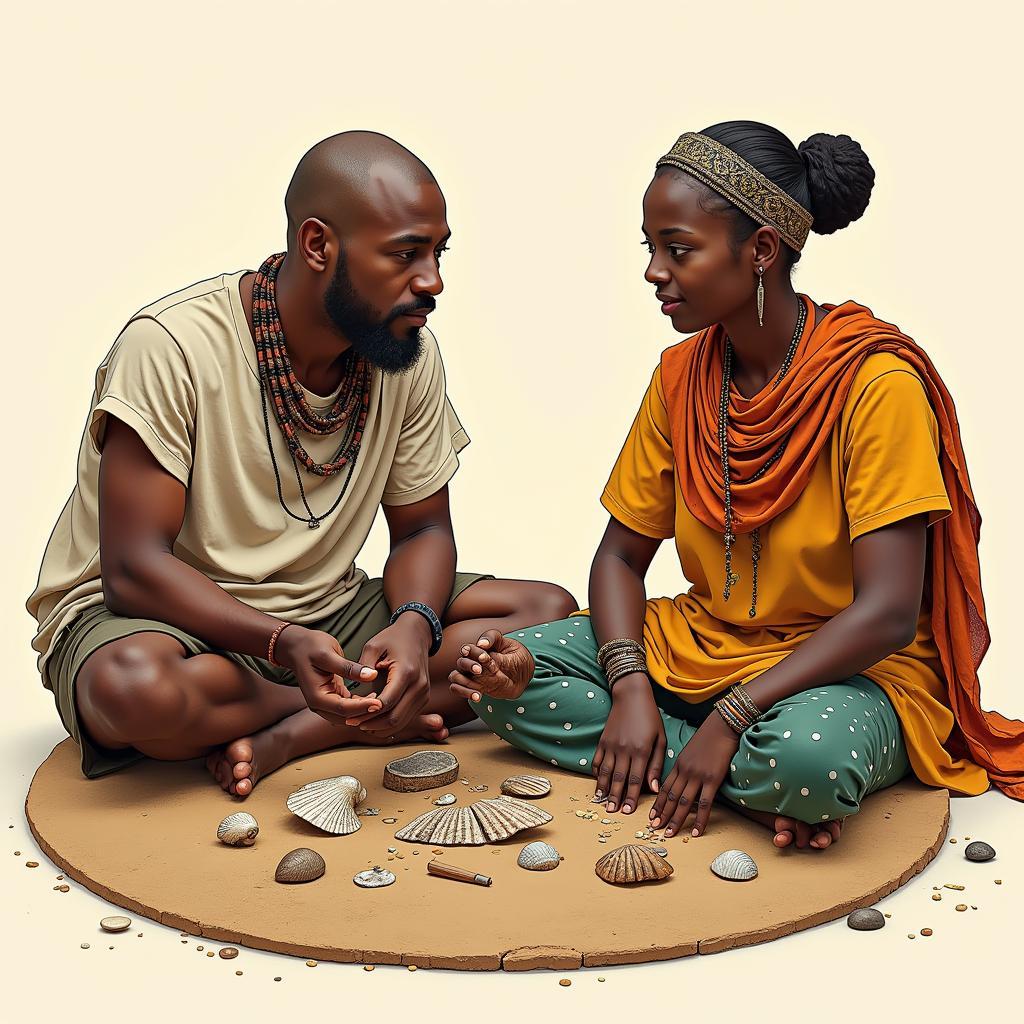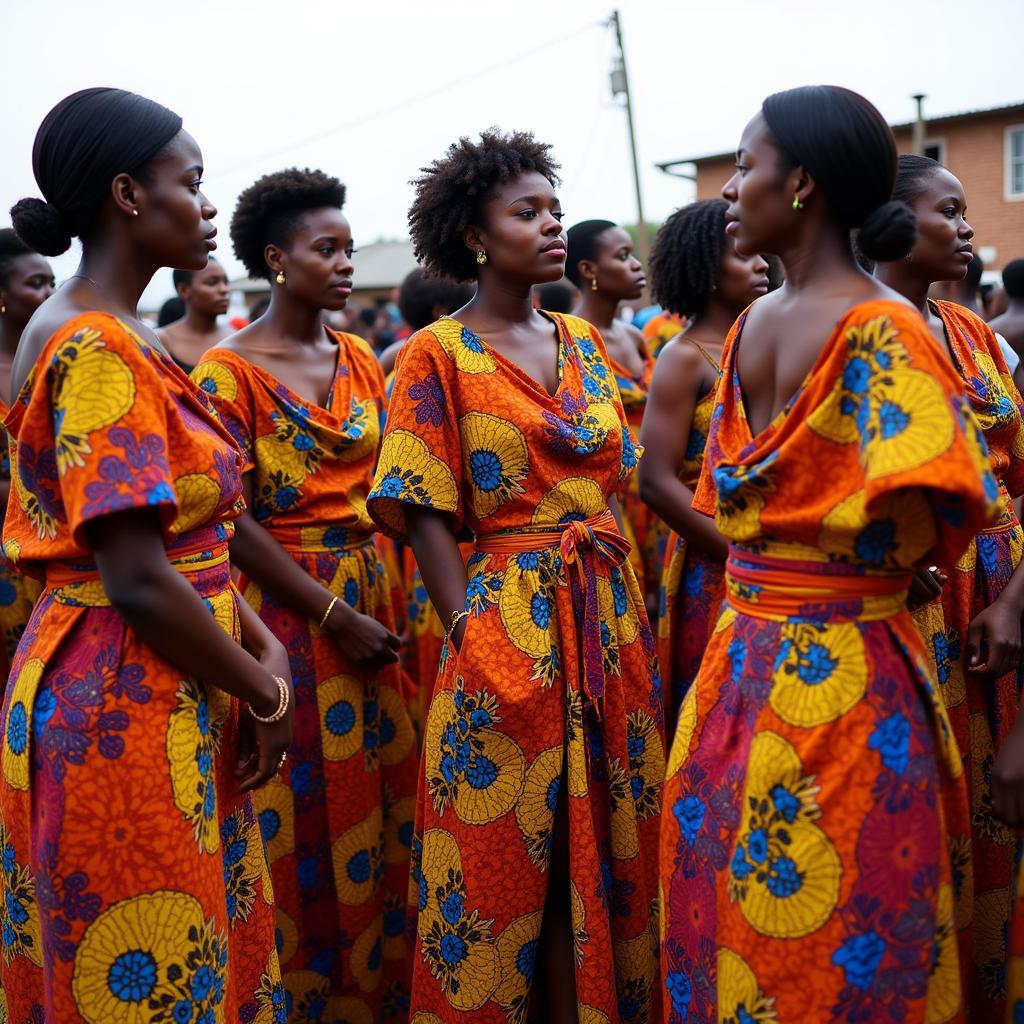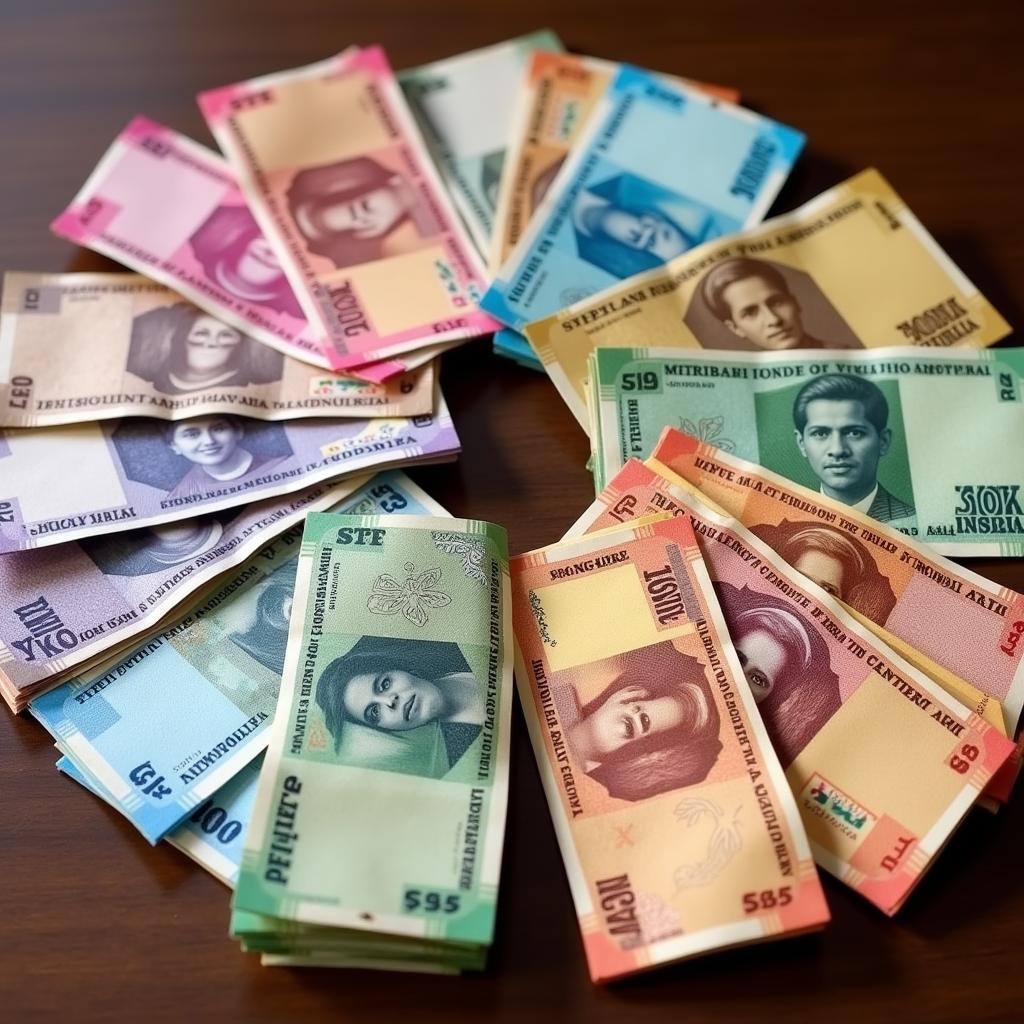Unraveling the Mystery of African Bundles: What They Are and Why They Matter
The term “African Bundles” often evokes curiosity, conjuring up images of vibrant fabrics, intricate designs, and a sense of cultural richness. But what exactly are these bundles, and why are they significant in the tapestry of African life? Let’s delve into the heart of this fascinating subject.
More Than Just Packages: The Significance of Bundles in Africa
Across the vast and diverse continent of Africa, bundles hold a deeper meaning than their simple appearance might suggest. They are not merely packages used for carrying goods; they are symbolic representations of tradition, resourcefulness, and community spirit. From the arid savannas to the lush rainforests, bundles are woven into the fabric of everyday life, serving a multitude of purposes.
Types of African Bundles: A Glimpse into Diverse Cultures
The materials used, the techniques employed, and the specific uses of bundles vary greatly across different regions and ethnic groups in Africa. Each bundle tells a story, reflecting the unique environment, traditions, and needs of its creators.
1. Bundles for Carrying Goods: Practicality Meets Artistry
One of the most common uses of bundles is for transporting goods. Whether it’s agricultural produce, firewood, handcrafted items, or personal belongings, bundles provide a practical and efficient means of carrying essential items.
In many rural communities, women skillfully balance large bundles on their heads, often walking for miles with remarkable grace and strength. These bundles are not just practical; they are often adorned with intricate patterns and vibrant colors, transforming them into works of art.
2. Ritualistic and Ceremonial Bundles: Connecting to the Spiritual Realm
Beyond their practical uses, bundles also play a significant role in various rituals and ceremonies across Africa. They are often used to hold sacred objects, offerings, or ceremonial items, representing a connection to the spiritual realm.
For example, in some cultures, bundles containing herbs, amulets, or other symbolic items are used in healing ceremonies or for protection against evil spirits. These bundles are often passed down through generations, carrying with them the wisdom and traditions of ancestors.
3. Bundles as Symbols of Identity and Status: Weaving Stories into Fabric
The way bundles are made and decorated can also reflect social status, clan affiliation, or personal identity. Certain patterns, colors, or materials may be associated with specific groups or occasions, serving as visual markers of belonging and heritage.
For instance, in some cultures, young women may create intricately woven bundles as part of their dowry preparations, showcasing their skills and creativity to potential suitors. These bundles become tangible representations of their cultural heritage and personal journeys.
African Bundles in the Modern World: Preserving Traditions, Embracing Innovation
In a rapidly changing world, African bundles continue to hold their relevance, adapting to contemporary needs while preserving cultural heritage. Today, we see a resurgence of interest in traditional crafts and sustainable practices, with artisans and designers incorporating the art of bundle-making into modern creations.
From stylish handbags and accessories to home decor items and contemporary art installations, African bundles are finding new life in the global marketplace. This renewed appreciation not only supports local artisans but also helps to keep ancient traditions alive, ensuring that the stories woven into each bundle continue to be told for generations to come.
Do you have any questions about African bundles or other aspects of African culture? Feel free to reach out to us! We’re here to help you explore the rich tapestry of African Life.
Frequently Asked Questions About African Bundles
1. What is the significance of carrying bundles on the head in some African cultures?
Carrying bundles on the head is a practical tradition rooted in necessity. It allows for hands-free movement and efficient load-bearing. Additionally, it has evolved into an art form, with women exhibiting grace and balance while carrying heavy loads.
2. Are there specific materials used to make African bundles?
The materials used to make bundles vary widely depending on the region and the intended use. Common materials include woven grasses, palm leaves, animal hides, and colorful fabrics.
3. Do men also carry bundles in African cultures?
While women are often associated with carrying bundles, men also participate in this practice, especially when transporting heavy loads or specific items related to their occupations.
4. Are African bundles still used today, or are they primarily a thing of the past?
African bundles are very much a part of contemporary life. While their traditional uses remain relevant, they are also being incorporated into modern designs and applications, showcasing their enduring appeal and versatility.
5. Where can I learn more about the specific types of bundles used by different African cultures?
Numerous resources, both online and in libraries, offer in-depth information about African cultures and their traditional practices. You can also explore museums and cultural centers dedicated to African art and heritage.
For further assistance and information, please don’t hesitate to contact us:
Phone: +255768904061
Email: [email protected]
Address: Mbarali DC Mawindi, Kangaga, Tanzania
Our dedicated team is available 24/7 to answer your queries and provide comprehensive support. We’re passionate about sharing the beauty and diversity of African culture with the world. Let us guide you on your journey of discovery!




